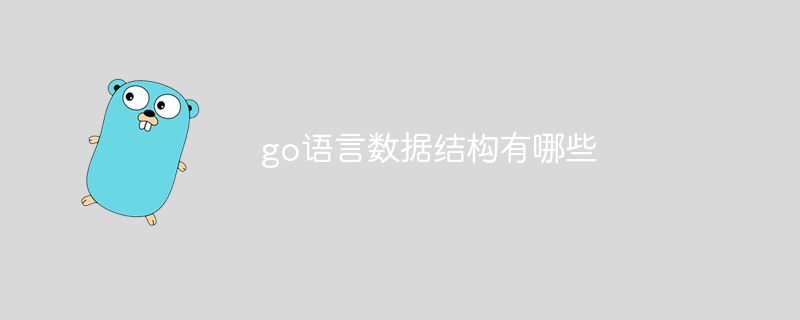
Go language data structures include arrays, slices, maps, structures, channels, interfaces, functions, etc. Detailed introduction: 1. Array: a set of fixed-length elements of the same type; 2. Slice: a dynamic length sequence based on an array, which can dynamically grow or shrink as needed; 3. Map: A collection of key-value pairs, used to store unordered key-value pairs; 4. Structure (Struct): can contain different types of fields, used to organize and store related data; 5. Channels, etc.

The operating system for this tutorial: Windows 10 system, go1.20.1 version, Dell G3 computer.
Go language provides a wealth of data structures, including the following main data structures:
Array (Array): a set of fixed-length elements of the same type gather.
Slice: An array-based dynamic length sequence that can dynamically grow or shrink as needed.
Map: A collection of key-value pairs, used to store unordered key-value pairs.
Structure (Struct): It can contain different types of fields and is used to organize and store related data.
Channel: A pipeline used to transfer data between Go coroutines to achieve concurrent communication.
Interface: defines the behavior of an object. It is an abstract data type that can achieve polymorphism.
Function: Function can also be used as a data structure, which can be passed as parameters, assigned to variables, etc.
In addition to the common data structures mentioned above, the Go language also provides some data structures in the standard library, such as heap, linked list, etc. In addition, the Go language also supports user-defined data structures, and various complex data structures can be defined according to specific needs.
The above is the detailed content of What are the data structures of go language?. For more information, please follow other related articles on the PHP Chinese website!




